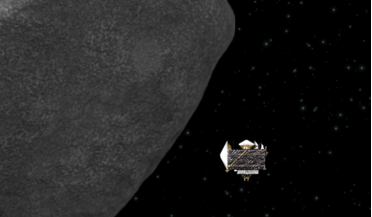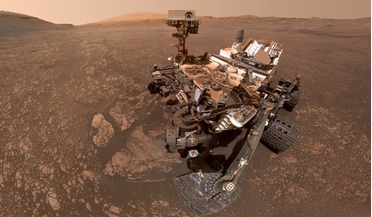 October 2024
Cinema and extraterrestrial archaeology
October 2024
Cinema and extraterrestrial archaeology
... biological and geochemical evolution of Earth’s surface environments. He is particularly interested in the early evolution of the nitrogen cycle, the mechanisms of oxygenation of the terrestrial atmosphere and their consequences on the biosphere and...
 09 May 2016
Ancient silicate grains reveal histories of stardust in the Galaxy
09 May 2016
Ancient silicate grains reveal histories of stardust in the Galaxy
... 17O is primarily made by the burning of hydrogen into helium during the carbon-nitrogen-oxygen (CNO) cycle. 18O on the other hand is produced when a nitrogen atom captures a helium atom and is therefore more commonly found in the...
 03 December 2018
OSIRIS-REx officially arrives at Bennu today
03 December 2018
OSIRIS-REx officially arrives at Bennu today
...the sampling procedure, the arm will release a burst of nitrogen gas as it makes contact with the surface of Bennu ...can be captured in the sampler head. The spacecraft has enough nitrogen to allow three sampling attempts, to collect between 60 and ...
 13 November 2019
Curiosity uncovers oxygen mystery on Mars
13 November 2019
Curiosity uncovers oxygen mystery on Mars
... of: 95% by volume of carbon dioxide (CO2), 2.6% molecular nitrogen (N2), 1.9% argon (Ar), 0.16% molecular oxygen (O2), and 0.06% carbon ... the other gases to raise the air pressure again. Nitrogen and argon also follow the pressure changes, but with...
 08 March 2021
New study determines best place and time to live in the Milky Way
08 March 2021
New study determines best place and time to live in the Milky Way
... The destruction of the ozone layer would produce nitrogen compounds that would reduce the amount of visible ... hydrogen and helium was enriched with heavier elements (oxygen, carbon, nitrogen) quickly in the center of the Milky Way, while in the...
 December 2014
MAVEN and the evolution of Mars
December 2014
MAVEN and the evolution of Mars
..., as viewed in false colour by NASA’s Mars Exploration Rover Opportunity The story of how Earth ended up with its nitrogen- and oxygen-rich current atmosphere is still unfolding, with formation of organic material releasing most of the oxygen...